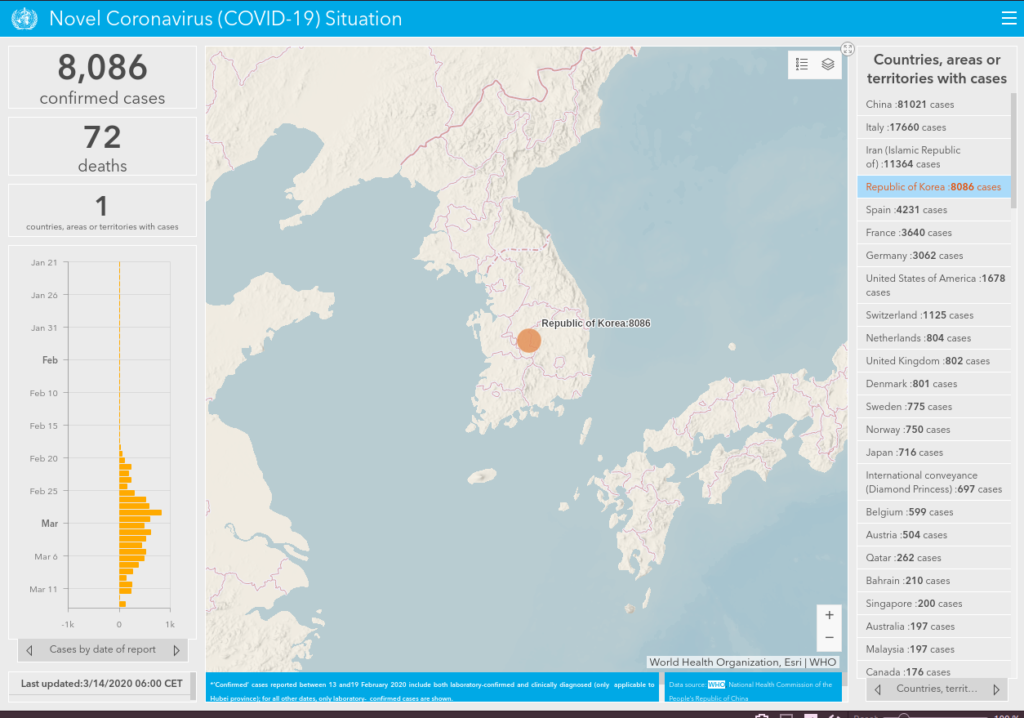
COVID-19 hysteria is in full swing. In the interest of “flattening the curve” of peak cases that might stress hospitals with a rush of capacity-exceeding, ventilator-dependent patients, have we created a greater societal crisis with a much larger and wider peaked curve? In an attempt to avoid certain costs and strain in one aspect of the economy, have even greater ones been caused throughout many sectors of the economy and life, in general? Are all costs and benefits being considered? Do we have a broad and long enough perspective to temper the narrow public health focus?
Yesterday, apparently following the strictest recommendations of CDC guidelines, an affiliate hospital declared that any employee or physician that travels outside of THIS PART OF THE STATE will not be permitted back into the hospital for 14 days. There are staff members returning from vacation who will not be able to report to work on Monday. Staffing, call and vacation schedules are significantly disrupted. In this small realm, what are those losses and costs, both personal and financial? And what if the hospital does become stressed with increased patient loads, now with reduced staff?
In the US, store shelves are being emptied of toilet paper, water and foodstuff. Travel is restricted. Quarantines are in place. Sports at all levels, in general, are cancelled. The effects are everywhere: concerts, Disney World, airlines, schools, work places, basic human endeavors of everyday life. Is there an aspect of the economy that remains unaffected? There is massive financial market upheaval. Trillions of dollars are to be injected into the economy by the Fed to stave off a worsening crash. Bailouts for affected industries and small business are being discussed. A bill is before Congress to give everyone free virus testing, free medical leave, free family leave. What are these costs and consequences, and who will pay for it all? At baseline, the US government spends about a trillion dollars a year more than it takes in,… and has for multiple past presidential cycles. How is your 401K? How is your work affected? What are the effects on individual families, especially the poor? To be clear, a Coronavirus did not cause any of the events in this paragraph. This is all the result of the response to the virus, not its effects. We are still early in the viral cycle and the reactions to it. Subsequent costs and fallout will not be known for months.
Maybe the public health response is appropriate. I’m arguing that it’s excessive. We’ll never really know. Later, most people will just say, “if we hadn’t been aggressive in flattening the curve, more people would have died.” How do you prove a negative? The precedent has been set. True COVID incidence will never be known because testing cannot be performed appropriately now or in the near future. Therefore, true mortality rates cannot be accurately calculated. COVID may be a ubiquitous virus that is mostly unrecognized among the population, leaving only the most symptomatic to be tested, thus skewing mortality rates. Regardless, we have data from the World Health Organization dashboard that shows cases in China and South Korea to have peaked within a matter of weeks and then decline thereafter. Of those tested, the Chinese may have a mortality rate as high as 4%, and South Koreans of about 0.9%. A lesson may be that this is a self-limited illness for almost everyone and that population incidence peaks and declines relatively rapidly.
I’ll argue for caution, voluntary social distancing, good hygiene, prudent travel. I argue against controls, mandates, restrictions, quarantines. The politicians are scared and do not want to be blamed for failures to act. It is an election year, after all. They also tend to see every crisis as an opportunity to expand legislation, oversight, spending and the pleasing of their lobbies and voter base. As a counter balance to that force, healthy skepticism seems appropriate. As we saw 9/11 open wide the doors of state surveillance, COVID will set the precedent for physical controls on citizen movement,… if not a mild introduction to martial law and lockdown, as China and Italy have pursued recently.
What are you trading for the promise of health and safety? How much true risk is there to that health and safety for which you make these trades? Now that precedents are being set, where will the limits be placed? And how will it expand once accepted? What happens with the next bad flu season? Who gets the bailouts, the paid leaves, the quarantines, the closures? What will be voluntary, and what mandated? What are the penalties? Who are the enforcers? When does the National Guard get called in? At what Dow Jones Index level does the central bank take over the stock market? How are the infected tracked and surveilled? These are all issues of degree. To some, they may seem extreme questions, but we are far along that continuum of trades at this point.
Perhaps the country has purchased a small scale curve flattening, but in exchange created a large scale peak across the economic and political landscape of the United States. Tempering the response, and in some cases the hysteria and over-reaction, may help flatten the broader curve of societal damage and costs.


